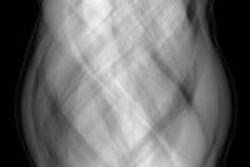
Radiology has made great progress in the science of improving CT image quality and controlling radiation dose, according to Dr. Eliot Siegel. Imaging informatics can help put this science into clinical practice, he said on Monday at the International Symposium on Multidetector-Row CT in Washington, DC.
Radiology facilities can use informatics to benchmark a practice's CT images against national data, creating an effective way to evaluate not only equipment but also staff performance. In fact, that's exactly what they've done at Siegel's institution, the University of Maryland.
"We've created an informatics platform to collect data from radiologists and technologists that includes a feedback category on image quality," he told attendees at the meeting, which is sponsored by the International Society for Computed Tomography (ISCT). "The feedback we get from the data allows us to fine-tune our performance. The entire department benefits from it, as it provides management support and quality control."
What is 'quality'?
What is a "quality" CT image? The answer depends on who you ask, according to Siegel.
"Despite the fact that there's a lot of excellent science, there's still tremendous variability in CT image quality across the U.S.," he said. "Teleradiologists working at national levels often comment on this."
 Dr. Eliot Siegel from the University of Maryland.
Dr. Eliot Siegel from the University of Maryland.
Even the RSNA's lexicon of radiology terms, RadLex, doesn't necessarily solve the problem. It uses a variety of terms for image quality, such as "nondiagnostic," "limited" (likely insufficient to answer the primary clinical question), "diagnostic" (routine quality, deemed acceptable), and "exemplary" (should be emulated).
"How often should there be an 'exemplary' CT exam? There's no definition for that," Siegel said.
Payors don't take CT image quality into consideration except at a basic "yes" or "no" accreditation level, and the current accreditation process is limited in its ability to assess and document image quality, Siegel said.
"Right now, it's 'pick your best exams every three years, and we'll pass or fail you,' " he said.
Why is quality important?
Tracking CT image quality is important not only to optimize patient care and improve accurate diagnosis, but also to help determine the trade-off in radiation exposure and dose and quality, Siegel said.
"If we don't have a mechanism to determine image quality and we don't have a way to determine how to improve it, then it's going to be difficult to optimize dose," he told session attendees.
Tracking image quality can also help a practice assess and optimize the cost-benefit ratio of its CT equipment.
"Image quality data can help determine when it's time to get a new CT scanner," he said. "And if a practice has multiple scanners, it can help determine when to put patients on the better scanner and when to use the less optimal scanner."
A quality 'report card'
For the most part, radiologists don't routinely assess CT image quality, and CT studies are rarely repeated due to poor images, according to Siegel.
"Little has been written about a methodology to establish optimal technique and dose from an imaging informatics perspective," he said. "It's really important to use data from radiologists, technologists, and physicists."
The informatics tool at the University of Maryland allows the tracking of multiple quality issues over time, on a rolling basis, according to Siegel. It can visualize the entire department's performance on multiple parameters and then give feedback for particular staff; for example, comparing one technologist's work to the work of others. The tool creates a "quality report card," Siegel said.
What might a next-generation quality feedback system include? It should have a place for radiologists to evaluate images while they dictate results, as well as the ability to factor in data from physicist evaluations, according to Siegel. In addition, the quality of a CT image could be evaluated using a pocket phantom scanned with each patient.
"Every image should be assessed by the technologist, the radiologist, and an automated assessment via [computer-aided diagnosis]," he said. "The computer assessment could be performed with a pocket phantom. CT techs would have the ability to review images at the scanner and could rate their own work and their peers."
In any case, radiologists need to monitor CT image quality all the time, not just when accreditation rolls around, Siegel said.
"Quality assessment shouldn't just be part of a three-year accreditation cycle," he concluded. "It should be a continuous process."




















